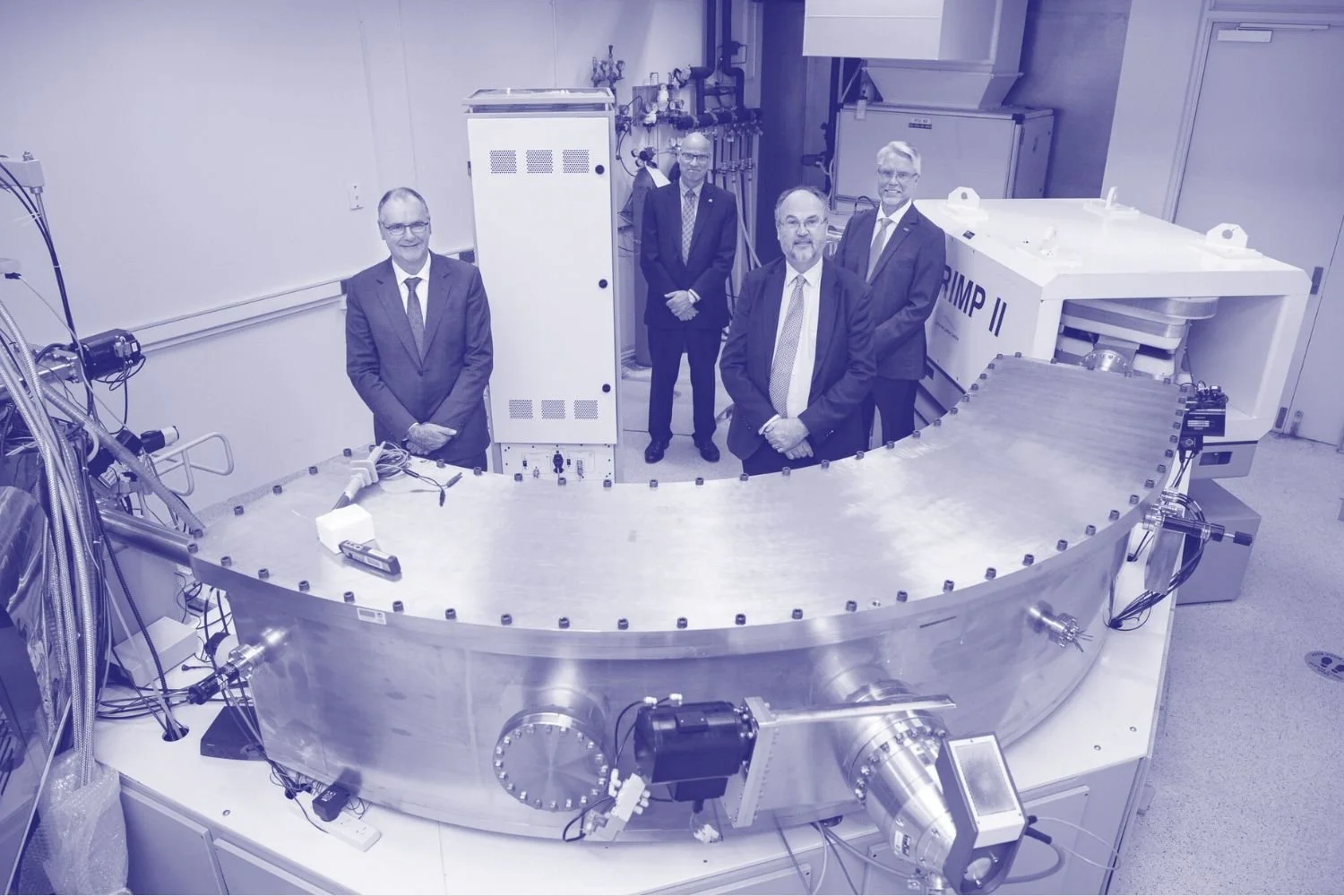Earth Composition & Evolution (ECE)
Tools for geochemistry & geochronology

Dr. Korien Oostingh preparing to carry out laser ablation analysis on PhD samples. Image: ©Curtin University.
AuScope’s Earth Composition and Evolution (ECE) program supports research into the evolution of the Australian continent, informing mineral exploration, climate studies, and natural hazard assessments. It brings together world-class laboratory facilities, instruments, and data systems that provide researchers with access to advanced geochemistry, geochronology, and thermochronology tools across Australia.
What we’re working on
Expanding access to advanced geochronology, thermochronology and geochemistry tools through coordinated laboratory networks across Australia.
Collaborating with Geoscience Australia, state surveys and the MinEx CRC to produce consistent, high-quality geochemical datasets at a national scale.
Developing eResearch tools and trusted repositories to make samples and data easy to find, reuse and preserve under the FAIR Data Principles.
Building EarthBank with the AuScope Geochemistry Network (AGN) — a national platform for visualising, analysing and extracting georeferenced geochemical data.
Research Facilities and Tools

Enabling an exciting future for geoscience research (left – right): Curtin DVCR Prof Chris Moran, Curtin PVC Science & Engineering Prof Jeremy Kilburn, WA Mines & Energy Minister Bill Johnston and John de Laeter Centre Director Prof Brent McInnes. Image: Ezra Alcantra
Since 2006, AuScope’s Earth Composition and Evolution (ECE) program has co-funded the purchase, upgrade and maintenance of instruments at:
Curtin University: John de Laeter Centre: Mass spectrometers and micro-analysis systems.
University of Western Australia: Centre for Microscopy, Characterisation & Analysis (CMCA): Cameca IMS 1280 ion microprobe.
University of Melbourne: Geohistory Laboratory - Thermochronology Instrumentation.
Australian National University: SHRIMP and TerraneChron® capability (formally located at Macquarie University).
Contact: Prof. Brent McInnes for access and collaboration.
Researchers across Australia can access our facilities, join our network or access our data through collaborative arrangements and online portals.
Impact
Discover our recent case studies and highlights that showcase how the Earth Composition and Evolution (ECE) program is helping researchers uncover Australia’s geological history and better understand the processes that shape our planet.
A powerful new laser at the University of Melbourne is turbo-charging rock-dating, making thermochronology faster and sharper than ever. It is set to spark fresh insights into landscapes, ancient art, and hidden mineral treasures.
Professor Brent McInnes shares the history of AusGeoChem and discusses its upcoming rebrand to AuScope EarthBank – a new name that reflects the platform’s international reach and commitment to open science.
Using NCRIS-enabled laser technology, a study on the 2021 La Palma eruption demonstrates how analysing magma chemistry over time can enhance volcanic monitoring and forecasting, potentially mitigating future eruption hazards globally.
Take a dive into the top AuScope enabled science papers of 2021! Here we present a collection of newly published geoscience research that captures a breadth of new knowledge, from the depths of ancient oceans to the spinning edges of asteroids. Excitingly, this new knowledge will contribute to ongoing learning about our shapeshifting planet.
Our spectrometry wizards at Macquarie University’s MQ GeoAnalytical laboratory (MQGA) are at it again, innovatively applying their new age-dating technique to novel science challenges outside of the geology domain.
ECE facilities support 800+ researchers each year, contributing to hundreds of publications and major discoveries, such as:
Software and data systems enabling automated, reusable geochemical data to the AuScope Discovery Portal.
Improved understanding of mineralisation and mass extinction events in Australia.
Our Pilot Projects
Get involved
ECE is developing a national access framework to make lab infrastructure and expertise more widely available. Participating institutions help develop eResearch tools, training, and national data collections via EarthBank.
Our News
Take a look around Curtin University's John de Laeter Centre
Curtin University's John de Laeter Centre houses advanced instrumentation for high quality chemical, mineralogical and microstructural analysis, and high resolution imaging. This video shows the SHRIMP B, one of two high resolution ion micro probes located at the Centre. Have a look around. Learn more: http://jdlc.edu.au/facilities/
PROGRAM LEADER
Professor Brent McInnes
JdLC, Curtin University
PROJECT LEADERS
Macquarie Uni
Prof. Olivier Alard ANU
Melbourne Uni
Prof. Andrew Gleadow
Dr Brandon Mahan
Thermochronology Lab
Uni of Western Australia
Dr Laure Martin
Centre for Microscopy,
Characterisation & Analysis
Curtin Uni
Dr Bryant Ware
Centre for Microscopy,
JdLC, Curtin University
DURATION
Since 2006

























































